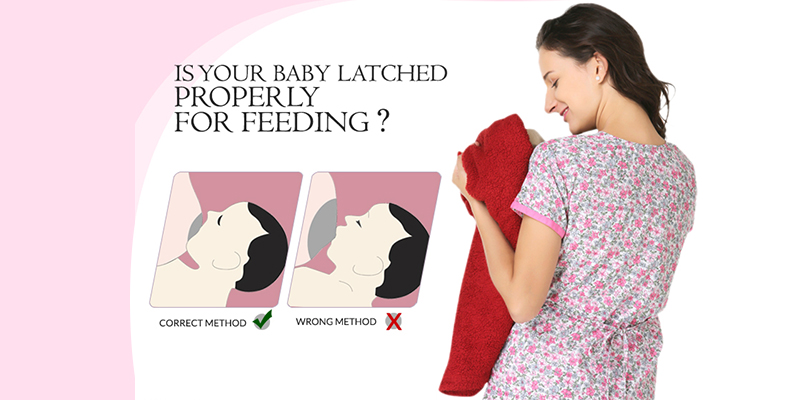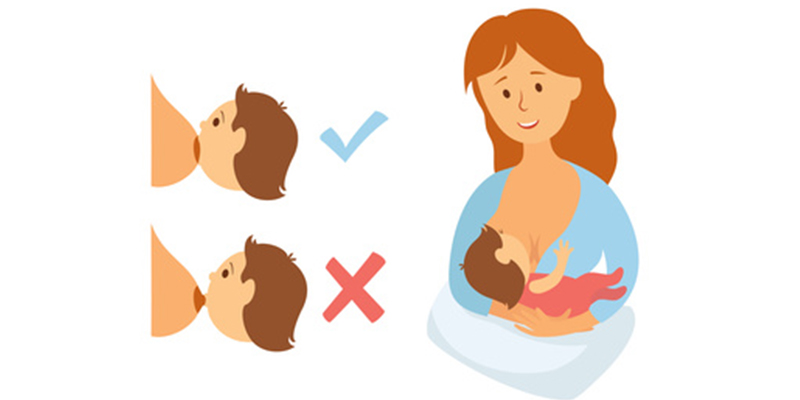
Many new mothers assume that infants are born knowing instinctively how to attach themselves to the breast and that if you present your breast in the proper way he will know what to do. Certainly some babies are capable of self-attachment, with good technique. This is most likely to occur in the first hour after birth but can be repeated later on. (Researchers have studied infants who are able to maneuver themselves from the mother’s lower abdomen, where they were placed immediately after delivery, up to the nipple, where they self-attach and start suckling. This has been called the “breast crawl.” Videos of this are available on the Internet.)
Most newborns do easily learn to latch on to the breast and soon begin the deep, regular suckling and rhythmic swallowing that typify successful nursing. But not all babies know instinctively how to latch on. You may need to teach your baby until he experiences enough successful feedings to associate his feeding behaviors with the satiation of his hunger.
The key to successful latching on involves taking enough of the breast into the mouth so that the nipple is drawn to the back of the baby’s mouth and his gums and tongue are compressing the areola, covering about an inch or two of the areola from the base of the nipple. This suckling movement causes your baby’s jaw to move the milk from the breast while his tongue makes a wavelike motion underneath the nipple, causing your milk to flow out through the tiny holes in your nipple. To achieve this, your baby’s mouth must truly be open wide as he latches on. Many early nursing mistakes occur when the mother hasn’t waited until her baby’s jaws are about as wide as they can be before she pulls him to her breast. As a result, the baby sucks on the nipple only, a position that limits the amount of milk received and soon makes the nipple sore.
To help your baby take in a large mouthful, use your C-hold to gently compress your breast; this makes the areola narrower and the nipple stick out more so it is easier to grasp. As he latches on, his tongue should stick out a bit, cover his lower gum, and partially envelop the breast. His lips should turn outward and press against your breast.
Try, Try Again
If your infant doesn’t manage to latch on properly the first time, gently detach him by sliding your finger into his mouth and pressing down on your breast to break the suction. You’ll know your baby didn’t latch on properly if you see indentations in his cheeks when he suckles, hear clicking noises, or notice his lips curled inward. He may also move his head frequently or not do any swallowing.
Incorrect latching may also cause pain for you. Don’t try to just pull him off your breast, since this could cause nipple pain. Keep practicing this latch-on technique until you and your newborn have mastered it, and don’t hesitate to ask the hospital nurses and lactation specialists for help.
Last Updated 11/21/2015
Source New Mother’s Guide to Breastfeeding, 2nd Edition (Copyright © 2011 American Academy of Pediatrics)
The information contained on this Web site should not be used as a substitute for the medical care and advice of your pediatrician. There may be variations in treatment that your pediatrician may recommend based on individual facts and circumstances.






